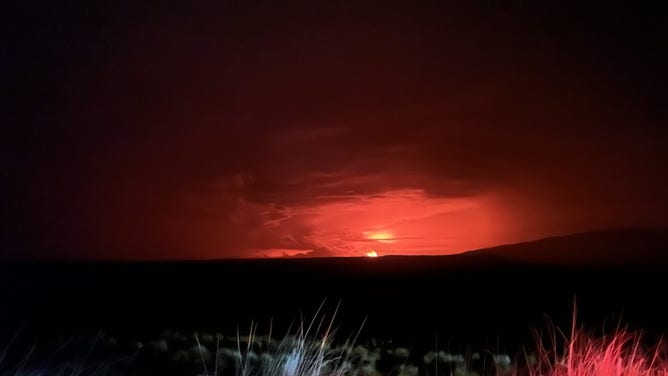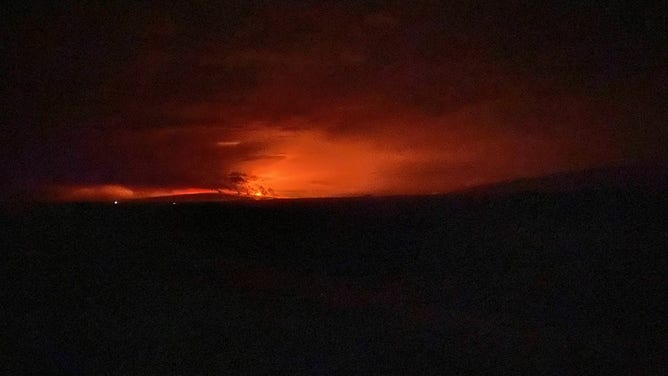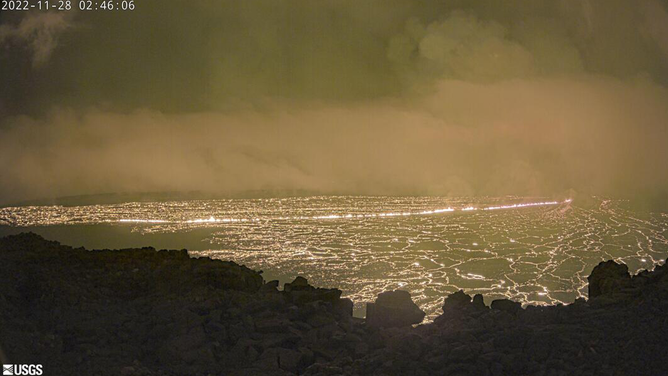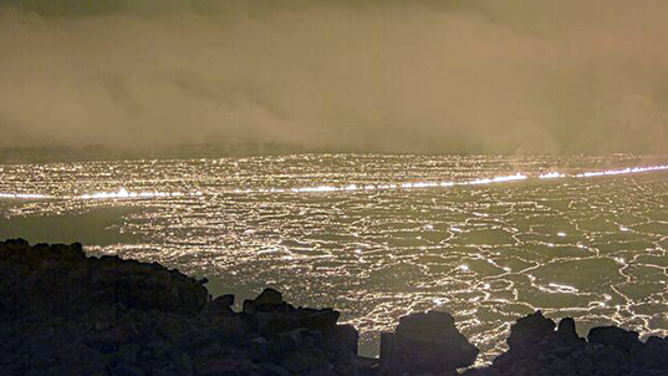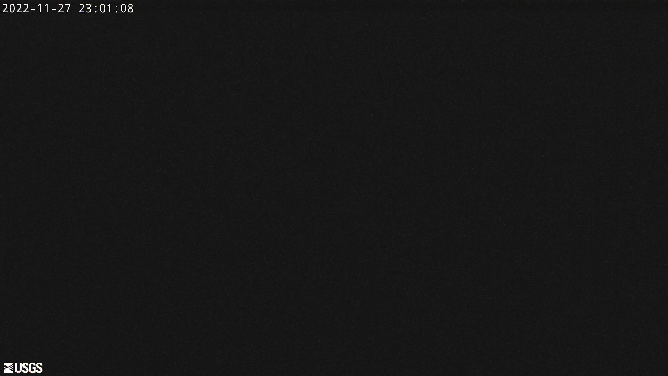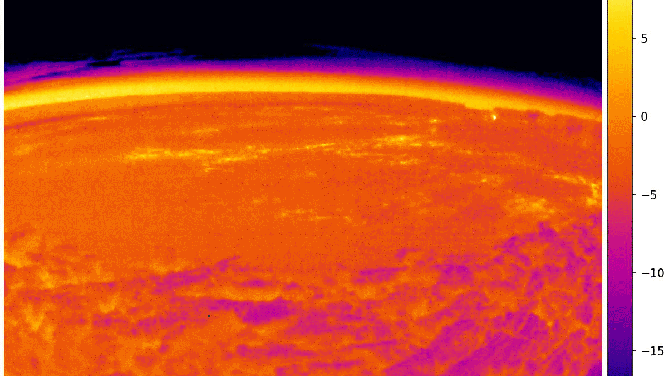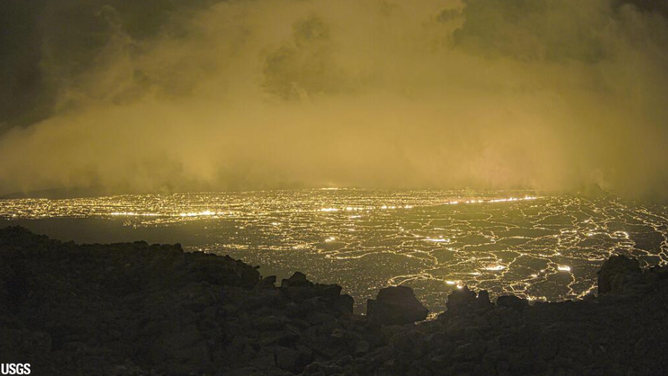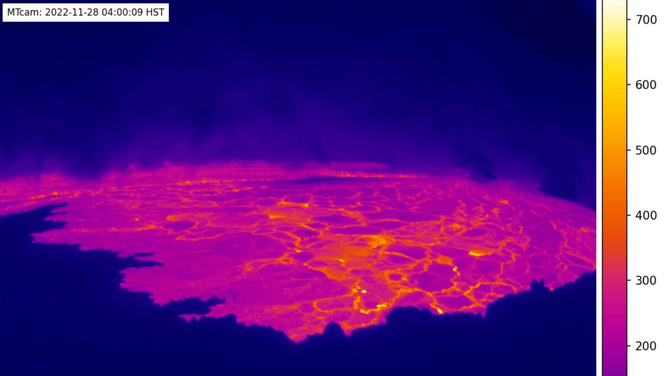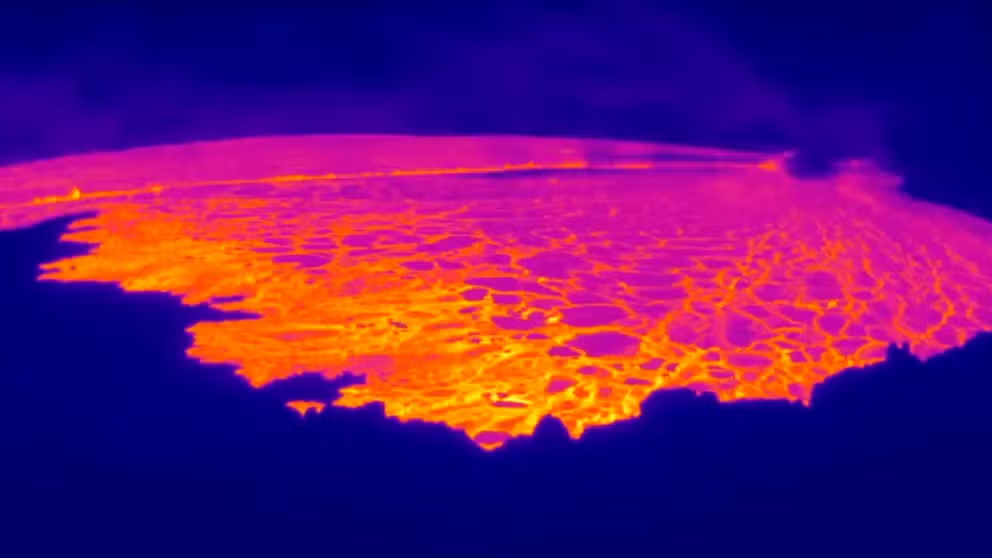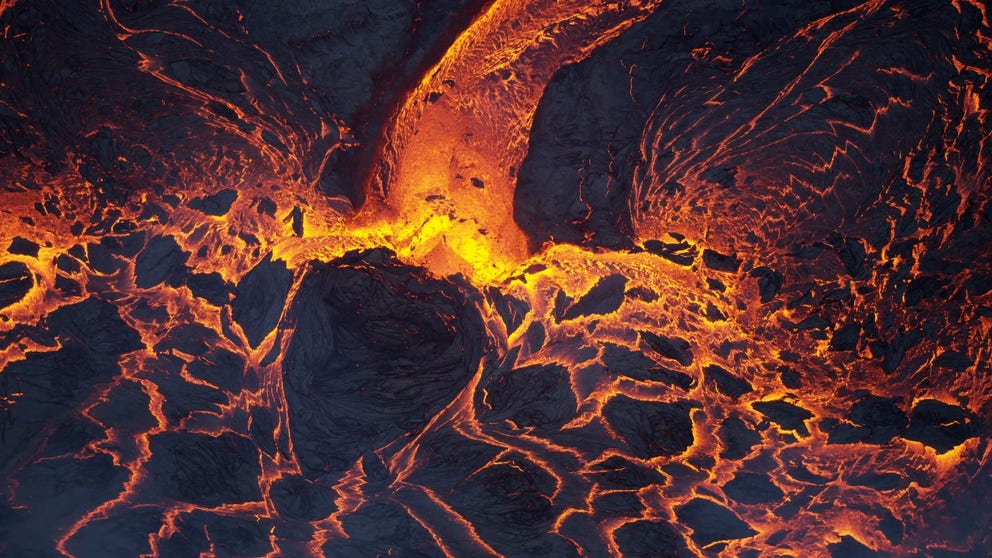Hawaii’s Mauna Loa, world’s largest active volcano, erupts for first time since 1984
Residents have been told to review emergency plans after Hawaii's Mauna Loa volcano began erupting Sunday night for the first time in 38 years.
Mauna Loa eruption: What's next for the world's largest volcano in Hawaii
The November 27 eruption is the first since 1984 for Mauna Loa—ending its longest quiet period on record.
HAWAII VOLCANOES NATIONAL PARK – Hawaii’s Mauna Loa volcano began erupting for the first time in 38 years on Sunday night, ending the longest quiet period between eruptions on record.
The U.S. Geological Survey said Mauna Loa’s eruption began about 11:30 p.m. local time inside Moku‘āweoweo, the summit caldera.
Mauna Loa eruption: What's next for the world's largest volcano in Hawaii
The November 27 eruption is the first since 1984 for Mauna Loa—ending its longest quiet period on record.
The USGS said the eruption of Mauna Loa migrated from the summit of the volcano to the Northeast Rift Zone, where fissures are feeding several lava flows. Staff from the USGS' Hawaiian Volcano Observatory (HVO) confirmed the fissures at higher elevations within Hawaii Volcanoes National Park have been feeding lava flows upslope of the Mauna Loa Weather Observatory.
The USGS said lava flows are not threatening any downslope communities and all indications are that Mauna Loa’s eruption will remain in the Northeast Rift Zone. However, winds in the area may carry volcanic gas, ash and "Pele’s Hair" downwind. Pele’s Hair is thin glass fibers that are formed during a volcanic eruption and are named after the Hawaiian volcano deity, Pele.
WHAT MAKES ‘PELE’S HAIR' DURING A VOLCANIC ERUPTION?
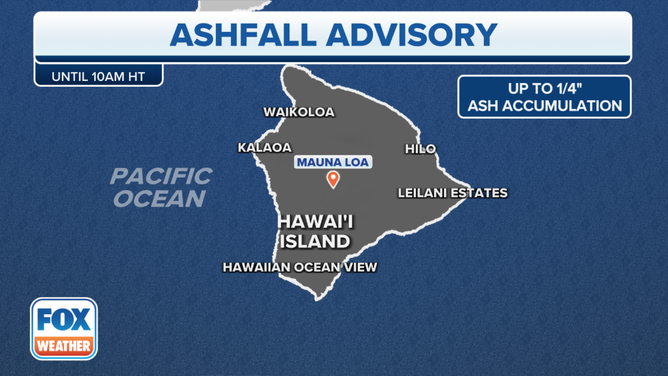
An Ashfall Advisory has been issued for Hawaii's Big Island after the Mauna Loa volcano erupted on Sunday night.
(FOX Weather)
Because of the threat of ash blowing downslope, the National Weather Service has issued an Ashfall Advisory on Hawaii's Big Island until 10 a.m. local time.
Officials said a quarter-inch of ash accumulation is possible, and people with respiratory problems should stay indoors or wear cloth masks to limit exposure to potentially dangerous particles.
LAVA FLOWS FROM MAUNA LOA VOLCANO CREATES GLOWING SKY ACROSS HAWAII'S BIG ISLAND
The USGS said the HVO has been in close contact with emergency officials and is monitoring Mauna Loa. An aerial reconnaissance mission will be conducted to monitor Mauna Loa's eruption further and assess other hazards.
Residents urged to review emergency plans
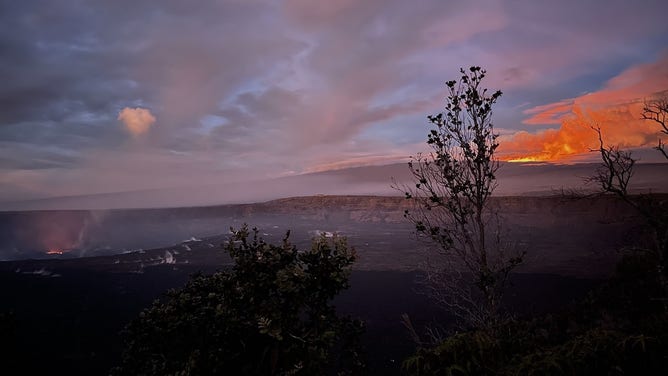
Mauna Loa and Kīlauea erupt together. Photo from Kūpinaʻi Pali at 6:06 a.m. HST on Monday, Nov. 28 in the park.
(NPS Photo / J.Ibasan / FOX Weather)
The HVO had also increased the alert level for volcanic activity on Mauna Loa from "Advisory" to "Warning" when the eruption began on Sunday night, according to the Hawaii Emergency Management Agency.
As a precaution, emergency officials have opened shelters at the Old Kona Airport and Ka'u Gymnasium due to the eruption.
All Hawaii Department of Education campuses on Hawaii Island remain open Monday, but department officials said they continue to closely monitor any potential impacts from the eruption.
Scientists have closely monitored Mauna Loa since September when the volcano began showing signs of increased seismic activity.
WATCH LAVA FLOW IN THESE MESMERIZING VOLCANIC ERUPTIONS AROUND THE WORLD
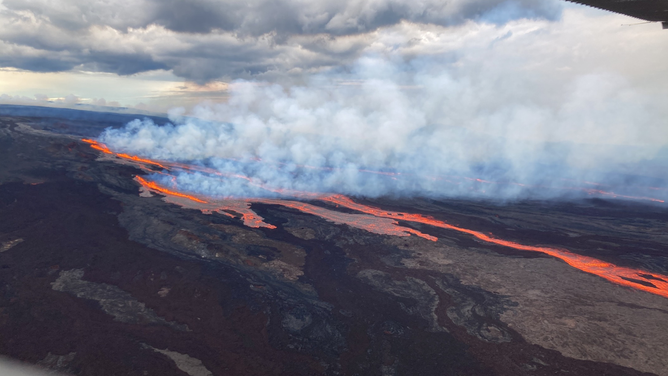
Lava is seen flowing from Hawaii's Mauna Loa volcano after it began erupting on Sunday night.
(USGS/Civil Air Patrol / FOX Weather)
Residents who are at risk of lava flows from Mauna Loa have been asked by emergency officials to begin reviewing emergency plans and to refer to Hawaii County's civil defense for further guidance and other important information regarding the eruption.
"First and foremost, you just need to follow the directions by the emergency management personnel that are actively monitoring the situation to make sure that they keep everyone safe," said senior forecaster for the National Weather Service in Honolulu Jon Jelsema.
World's largest active volcano, Mauna Loa in Hawaii, erupts overnight for first time in decades
For the first time in 38 years, Hawaii’s Mauna Loa volcano began erupting on Sunday night.
The lava flows will most likely remain within the caldera walls of Mauna Loa if the eruption remains inside Moku‘āweoweo. However, officials warned that lava flows could quickly move downslope if vents form outside its walls.
"That’s quite a concern because once (lava) fills up the caldera on top of Mauna Loa, it will spill over the side," Jelsema said. "And this lava is quick-moving lava that can reach the coastline in two hours. So, you can imagine how dangerous a situation that is for the communities that are downslope."
WATCH: DRONES CAPTURE VIDEO OF THREE ACTIVE VOLCANOES AROUND THE WORLD
Aviation dangers
While lava is extremely dangerous for people downslope of Mauna Loa, there is a danger to aircraft in the area as well.
"Last night the plume ended up reaching a height of about 45,000 feet," Jelsema said. "So, here in our office, we ended up issuing significant weather advisories for ash so that the (Federal Aviation Administration) could avoid those areas and keep the planes safe."
On Monday, Southwest Airlines issued a travel advisory warning passengers that Mauna Loa volcanic activity may cause flight delays or cancelations to or from Hawaii. According to Southwest, the eruptions may impact flights to and from Hilo, Honolulu, Kahului, Kona and Lihue international airports.
Mauna Loa history
Since 1843, Mauna Loa has erupted 33 times, averaging an eruption every five years.
However, most eruptions before 1950 had an average frequency of 3.5 years. Since 1950, there have only been two eruptions – a summit eruption in 1975 and a rift eruption in 1984.
It had been the longest quiet period on record for Mauna Loa before Sunday night's eruption.
Watch lava flow in these mesmerizing volcanic eruptions around the world
Experience the power and majesty of a volcano up close in this awe-inspiring video.


